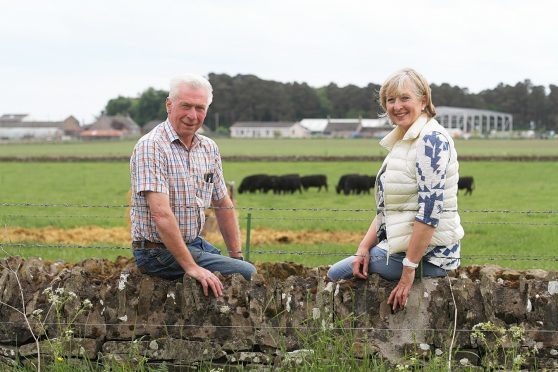For Aberdeen-Angus enthusiasts the world over, a farm auction near Forfar later this month will be far more than a sale of cattle – it will be about buying a fragment of history at the home of the breed.
Up for sale in an outdoor wooden ring beside Kingston farmhouse will be 50 black animals that can be traced back to the original Angus families that are revered across the globe.
The pedigree names are legendary: the Cherry Blossoms; Ericas; Jipseys; Miss Burgess; Ruths of Tillyfour; Kindness Pride; Eulima; Nells of Aldbar and Prides of Aberdeen are the last remnants of the 100 foundation families that are credited with forming the original breed in the early 1800s, and members of eight of these families will be up for international auction.
While Angus cattle have been widespread across continents for generations, the animals bred on Kingston Farm stand out because they contain none of the genetics that were imported to the UK from Canada in the 1970s and 1980s in an attempt to make the breed bigger and competitive against the wave of rangy Simmentals, Charolais and Limousin breeds being imported at the time from Europe.
Kingston’s farmer, Geordie Soutar, recognised the need to save the original genetics in the nick of time.
Back in 1995 the native Angus breed was on the Rare Breed Survival Trust’s critically endangered list and he had to scour the country to secure some of the last pure cows for the foundation stock of his Dunlouise herd. Over the last 22 years he has built up that herd using line breeding and the contribution of precious native Angus genetics held by the trust.
“When we started there were only one or two females of each line left in existence, and they were often aged cattle, up to 12 years old,” he said.
“We acquired one of the last of the Jipsey family and from her we bred Jipsey Earl which is the most successful Angus bull in history because we sold a third of his semen to an international company which exported it around the world. Earl is revered in Nevada, in France, Argentina – and other genetics have been exported to Uruguay, Mexico, Germany, Australia, Ireland and Sweden.
“People want the genetic blueprint. The Angus breed was on the go from the early 1800s and we can trace some of our cows back to the 1830s.”
The small herd grazing Kingston’s lush grass fields looks uncannily like the small, square-shaped cows of ancient paintings. But while this type of animal fell out of favour 50 years ago, Mr Soutar insists the wheel is beginning to turn full circle as meat processors demand smaller carcases and commercial producers look for efficient, easy-care animals which can be grass-finished.
“There’s no labour on farms any more, and farmers don’t want to get up through the night to calve their cows,” he said.
“Young people are challenging what their fathers and grandfathers have been doing and they want to farm more sustainably.”
Kingston Farm is just 11 miles from where Hugh Watson is credited with experimenting with breeding the first animals in what has become the world’s most famous breed, and Geordie Soutar regularly takes international visitors to pay homage at the breeder’s grave at Newtyle Church.
“I’ve lost track of the number of times I’ve taken people there, and one breeder from Montana lays a wreath every time he comes to Angus,” he said.
“Two great breeders, George MacPherson Grant and William McCombie, put the breed on the map, but it is here in Angus that it was founded, and across the world people talk about Angus cattle. It’s only in the UK we refer to them as Aberdeen-Angus.”
Geordie and Julia Soutar planned their farm sale to coincide with the World Angus Forum which is being held in Scotland later this month.
“We’ve been saving up the stock for years as well as keeping 62 embryos, and while it would have been easier to just put the animals in a lorry and sell them in a market, I got it into my head that the sale of original Angus genetics should be held in the middle of the county of Angus, so the pens are in construction and there will be tiered standing arriving any day now. We’re having a whisky tasting and there will be a spit roast of mature Angus beef, burgers, local Visocchi ice cream, beer, coffee and wine all provided on the day,” he said.
As for the animals’ value, Geordie says he has absolutely no idea how well they’ll sell.
“Breeding like this hasn’t been available in 50 years and we’re right in the middle of Angus, so there’s certainly huge interest.
“We know there will be people from Montana, Bavaria, Australia, Estonia and everywhere in between so there will be a lot of people here. But how many of them will bring their cheque books – that I can’t judge.”
The Dunlouise sale will be held at Kingston Farm, Forfar, on June 26.
